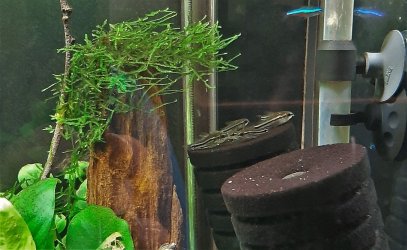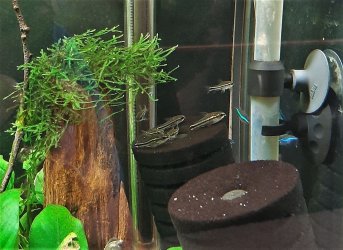Are the three Pygmy Cory varieties (hastatus, pygmaeus, and habrosus) able to interbreed? I searched around a little bit on the internet but couldn’t find much about it, except one article saying “only keep one species of Cory, they can interbreed”. It just didn’t sound very accurate or legit. I am asking because I thought it would be very interesting to have a tank, maybe a 40 breeder, with all three Pygmy Cories varieties (and maybe some cherry shrimp) set up with breeding in mind (driftwood, Indian almond leaves, alder cones, sand substrate, sponge filters or hang on back with pre intake sponge, lots of plants like Anubias, amazon sword, cabomba, water sprite or water wisteria, frog bit and such). I of course don’t want a bunch of little mutt Cories, So thought I’d check if that’s even possible first!
Also a side question, will nerite snails eat Cory eggs?
Also a side question, will nerite snails eat Cory eggs?






